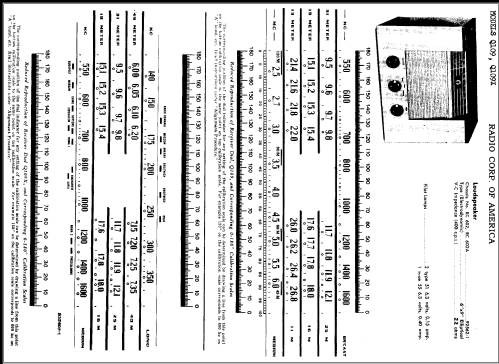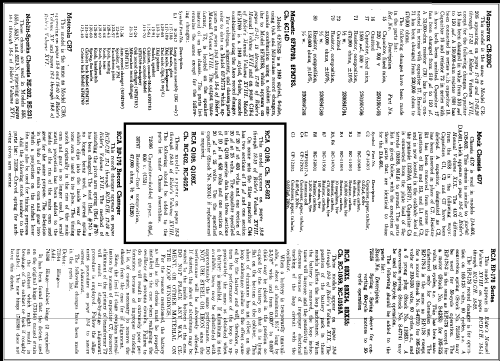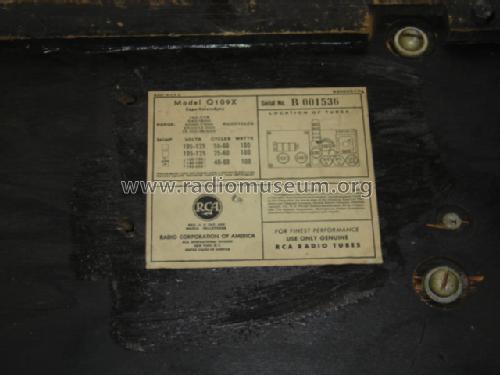Q109X Ch=RC602A
RCA (RCA Victor Co. Inc.); New York (NY)
- Country
- United States of America (USA)
- Manufacturer / Brand
- RCA (RCA Victor Co. Inc.); New York (NY)
- Year
- 1949 ?
- Category
- Broadcast Receiver - or past WW2 Tuner
- Radiomuseum.org ID
- 54418
-
- alternative name: RCA Manufacturing || Victor Talking Machine
Click on the schematic thumbnail to request the schematic as a free document.
- Number of Tubes
- 9
- Main principle
- Superhet with RF-stage; ZF/IF 455 kHz
- Wave bands
- Broadcast, Long Wave and more than two Short Wave bands.
- Power type and voltage
- Alternating Current supply (AC) / 105 - 260 Volt
- Loudspeaker
- Electro Magnetic Dynamic LS (moving-coil with field excitation coil)
- Power out
- 5 W (unknown quality)
- Material
- Wooden case
- from Radiomuseum.org
- Model: Q109X Ch=RC602A - RCA RCA Victor Co. Inc.; New
- Shape
- Tablemodel, low profile (big size).
- Notes
- LW, BC, 3xSW.
Elliptical 6"x 9" Edyn speaker.
- External source of data
- Ernst Erb
- Circuit diagram reference
- Rider's Perpetual, Volume 18 = 1949 and before
- Other Models
-
Here you find 5180 models, 3254 with images and 4217 with schematics for wireless sets etc. In French: TSF for Télégraphie sans fil.
All listed radios etc. from RCA (RCA Victor Co. Inc.); New York (NY)
Forum contributions about this model: RCA RCA Victor Co.: Q109X Ch=RC602A
Threads: 1 | Posts: 3
Band B on this set (Medium wave on the Q109X variant) is designed so that the first RF stage is always disabled and therefore this band has very poor sensitivity. It is assumed that this feature was incorporated to avoid overload of the input stages with strong local stations that more typically exist in the USA.
I modified my set so that the first RF stage is active for all bands by isolating the S3 front wafer (tag 5 on the Q109X or tag 4 on the Q109) on the wavechange switch so that the 6SG7 RF valve always has cathode to ground via the 10 ohm resistor R2.
The first RF stage can still be disabled for any band by switching the Local/Phono/Distant switch to local.
This provides full sensivity for all bands whilst retaining to option to disable the first RF stage if required.
David Sanderson, 13.Oct.18














